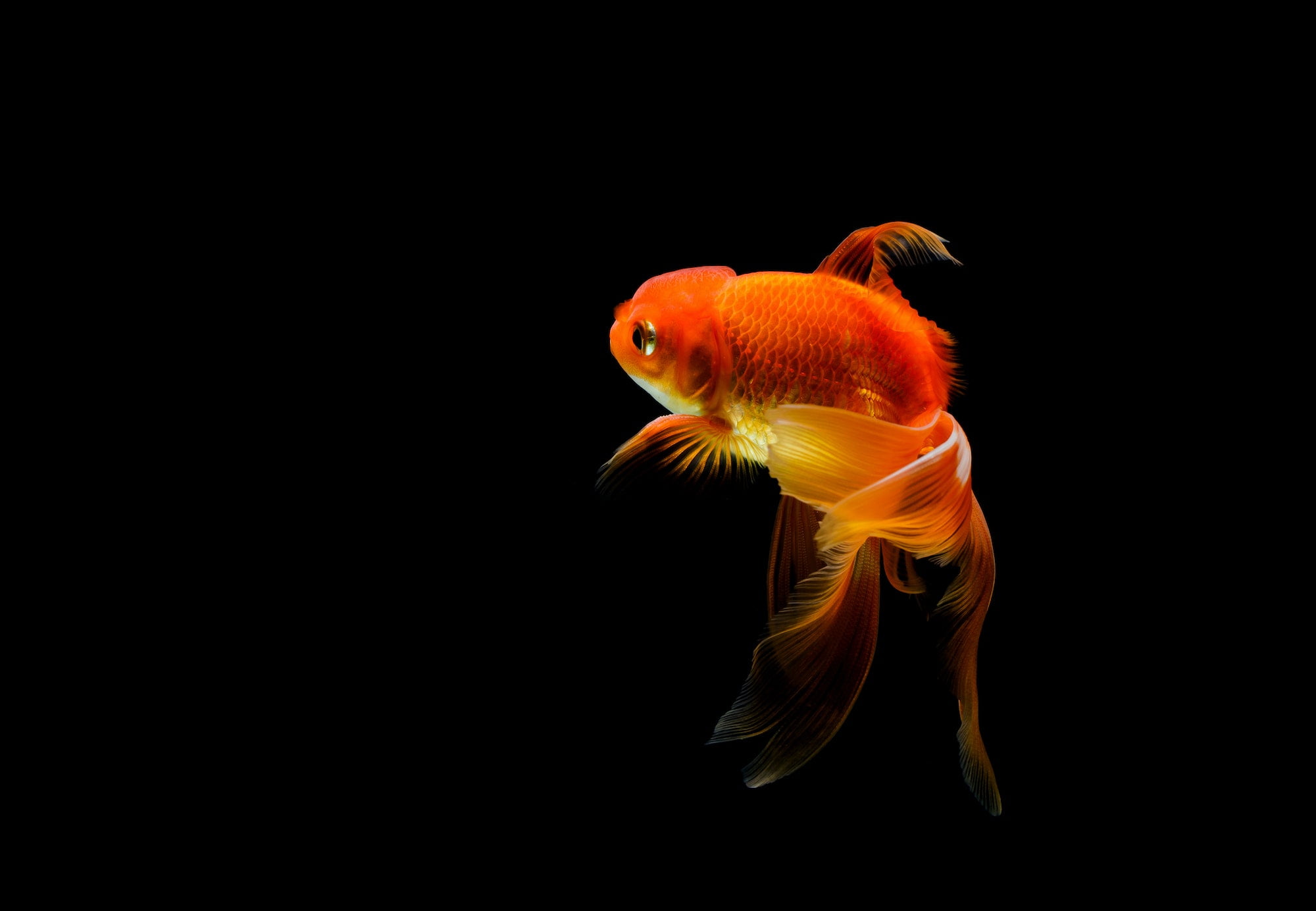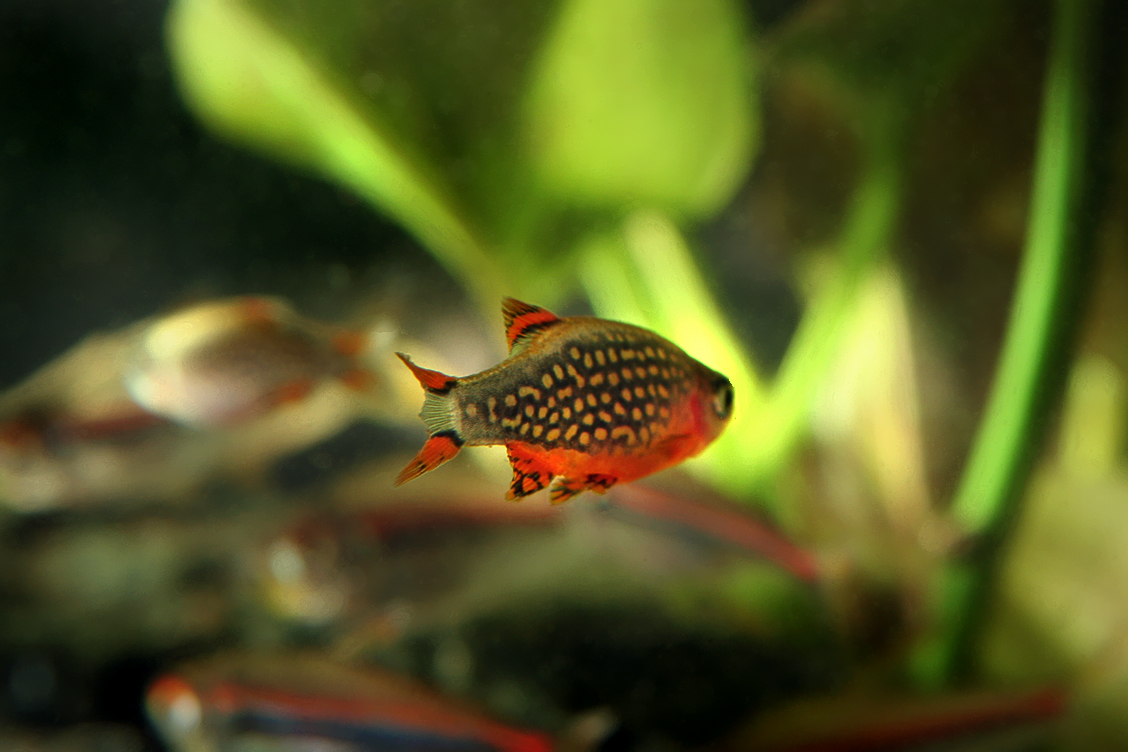Imagine a tiny underwater firework, bursting with color and personality. That’s the Golden Dwarf Cichlid for you! These pint-sized wonders, known to scientists as Nannacara anomala, are like the pocket-sized rockstars of the fish world. Hailing from the wild waters of South America, these little guys prove that great things really do come in small packages. With their sparkling scales and sassy attitudes, they’re ready to steal the show in any aquarium they call home.
Table of Contents
Their name comes from the Greek words “nannos” meaning dwarf and “kara” meaning head, perfectly describing their adorable appearance.
These charming cichlids hail from the rivers and creeks of Guyana and Surinam, where they live among plants and fallen leaves. In the aquarium, they’re happy hanging out near the bottom, exploring caves and hiding spots. They’re not picky eaters and will munch on small insects, worms, and even bits of plants.
One of the coolest things about Golden Dwarf Cichlids is how they change colors. Males can shift from dull brown to a dazzling blue-green with golden flecks when they’re feeling fancy. Females are usually a pretty orange-brown color. It’s like they’re putting on a light show in your tank!
These little fish are generally peaceful, but they can get a bit bossy during breeding time. They form cute little pairs and work together to care for their eggs and babies. It’s like watching a tiny underwater family drama unfold.
Fun fact: Golden Dwarf Cichlids were first discovered in 1905 by a scientist named Regan. Since then, they’ve become popular pets for fish lovers who want something a little different from the usual tropical fish.
If you’re thinking about keeping these little guys, remember they like warm, slightly acidic water and plenty of hiding spots. With the right care, they can live up to 5 years, bringing joy and color to your aquarium for a long time.
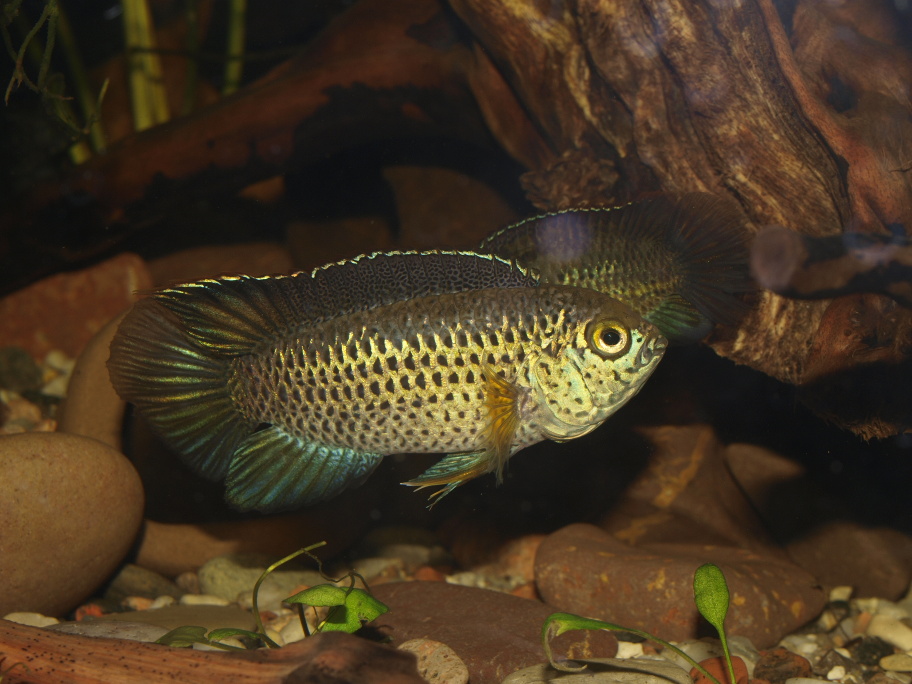
Golden Dwarf Cichlid Key Information
The Golden Dwarf Cichlid is a true gem in the aquarium world, boasting a dazzling array of colors that can light up any tank. Males showcase a stunning palette, transforming from a subdued brown to a vibrant blue-green adorned with shimmering golden flecks when they’re in the mood to impress. Females, while not as flashy, sport an elegant orange-brown hue that’s equally captivating. These color-changing wonders are sure to catch your eye and keep you mesmerized.
| Family | Cichlidae |
| Origin | Guyana and Surinam, South America |
| Price | Moderate, typically $5-$15 per fish |
| Common Names | Golden Dwarf Cichlid, Goldeneye Cichlid |
| Variants | Wild-type is most common, no known color morphs |
| Ideal Tank Size | 20-30 gallons for a pair |
| Water Parameters | Temperature: 75-82°F, pH: 6.0-7.5, Hardness: 5-12 dGH |
| Lifespan | 3-5 years with proper care |
| Full Size | Up to 3 inches (7.5 cm) |
| Natural Environment | Slow-moving rivers and creeks with plenty of vegetation |
| Behavior | Generally peaceful, but can be territorial during breeding |
| Habitat Preference | Bottom to mid-level dweller |
| Aquarium Decoration | Plants, driftwood, caves, and leaf litter |
| Ideal Tank Mates | Small, peaceful fish like tetras, rasboras, and corydoras |
| Fish to Avoid | Large, aggressive species or fin-nippers |
| Best Foods/Diet | Omnivorous: small insects, worms, flakes, and pellets |
| Disease | Susceptible to common freshwater fish diseases |
| Sex-switch | No known sex-switching behavior |
| Gender Differences | Males more colorful and slightly larger than females |
| Care Level | Moderate, suitable for intermediate aquarists |
| Breeding Level | Moderate, can be challenging but rewarding |
Ideal Tank Mates for Golden Dwarf Cichlid
The Golden Dwarf Cichlid is a charming and peaceful fish that can thrive in a well-planned community aquarium. When selecting tank mates, it’s essential to consider fish that share similar water parameters and temperaments. Here are 10 ideal tank mates that can coexist harmoniously with the Golden Dwarf Cichlid:
Neon Tetra (Paracheirodon innesi)
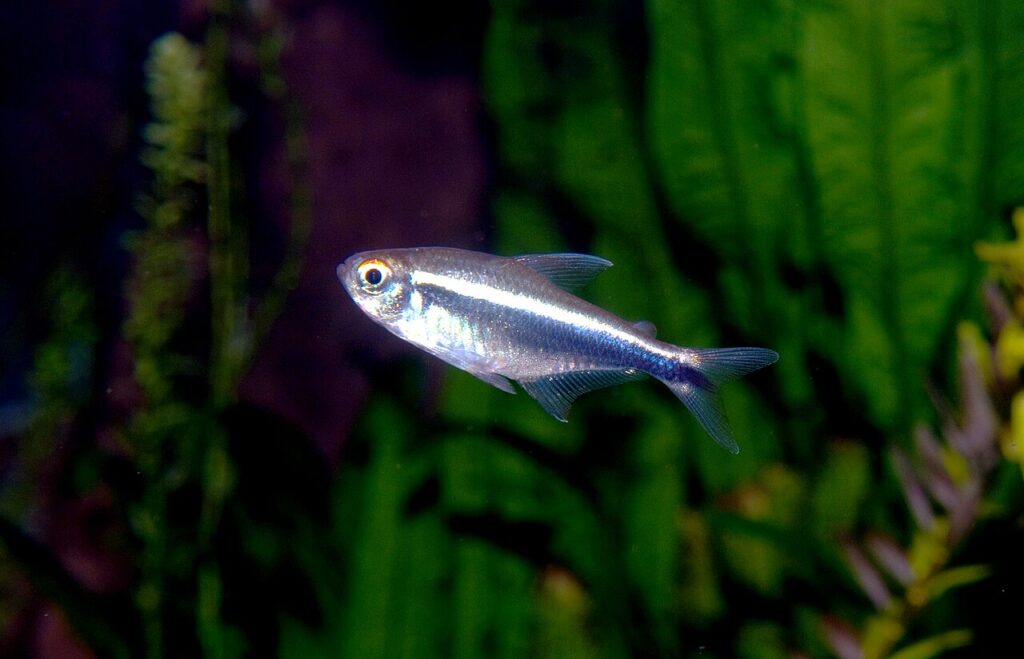
Neon Tetras are a perfect match for Golden Dwarf Cichlids due to their peaceful nature and similar size. Their vibrant blue and red coloration provides a stunning contrast to the golden hues of the cichlid. These small, schooling fish occupy the middle to upper levels of the tank, leaving plenty of space for the cichlids to explore the lower regions.
| Common/Market Names | Price Range | Care Level | Behavior | Life Span | Max Size |
|---|---|---|---|---|---|
| Neon Tetra | $1-$3 | Easy | Peaceful | 5-8 years | 1.5 inches |
Corydoras Catfish (Corydoras paleatus)
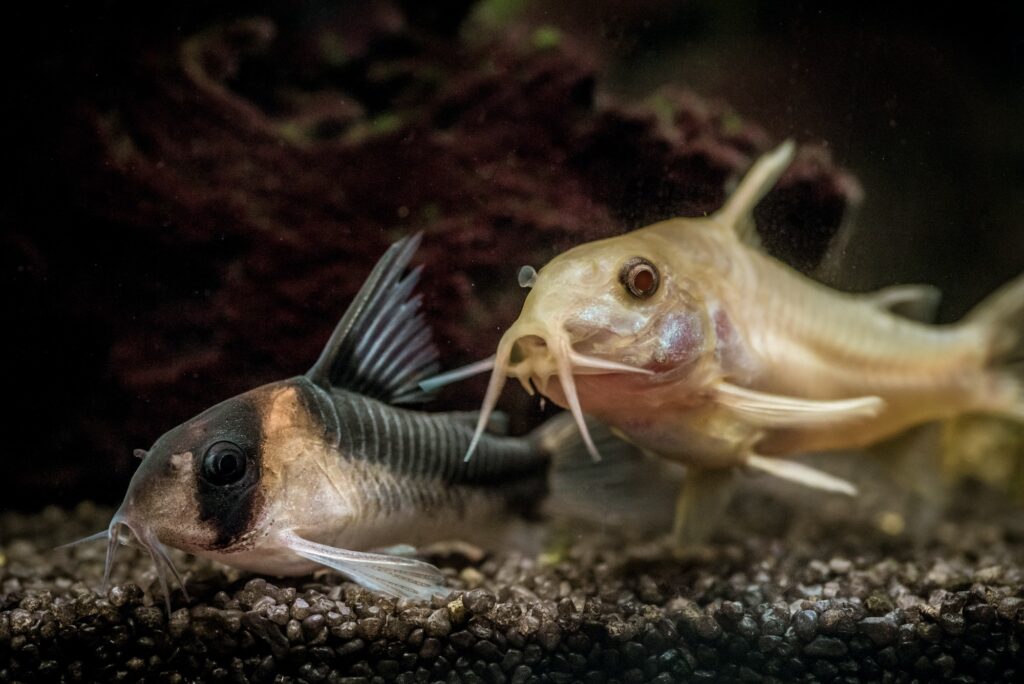
Corydoras Catfish are excellent bottom-dwelling companions for Golden Dwarf Cichlids. Their peaceful demeanor and habit of sifting through substrate complement the cichlids’ behavior. These armored catfish help keep the tank clean by scavenging for leftover food, creating a symbiotic relationship with the cichlids.
| Common/Market Names | Price Range | Care Level | Behavior | Life Span | Max Size |
|---|---|---|---|---|---|
| Peppered Cory, Salt and Pepper Cory | $3-$6 | Easy | Peaceful | 3-5 years | 2.5 inches |
Harlequin Rasbora (Trigonostigma heteromorpha)
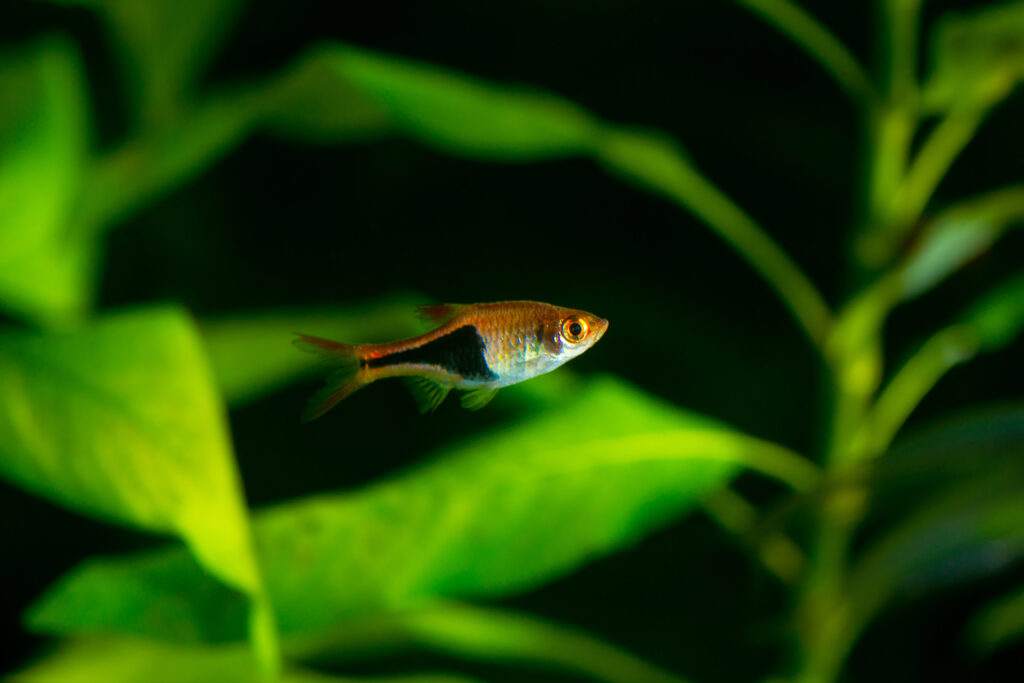
Harlequin Rasboras are ideal tank mates due to their gentle nature and striking appearance. These fish occupy the middle to upper water column, which allows the Golden Dwarf Cichlids to maintain their territory in the lower regions. Their orange and black coloration adds a beautiful contrast to the aquarium.
| Common/Market Names | Price Range | Care Level | Behavior | Life Span | Max Size |
|---|---|---|---|---|---|
| Red Rasbora, Red Razor | $2-$4 | Easy | Peaceful | 5-8 years | 2 inches |
Otocinclus Catfish (Otocinclus vittatus)
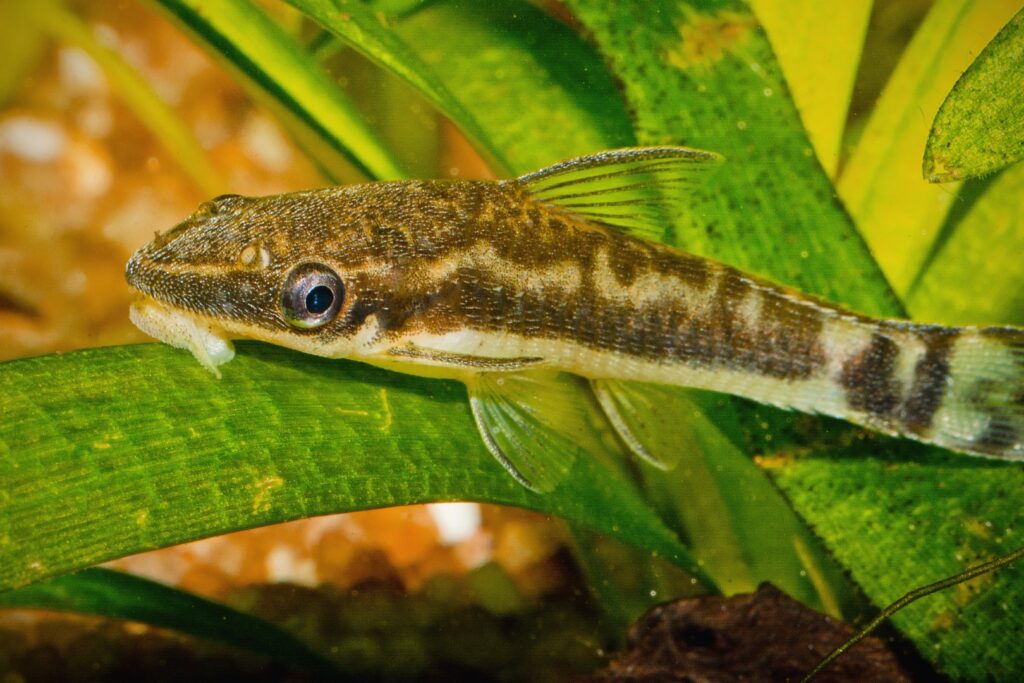
Otocinclus Catfish are perfect algae-eaters that coexist peacefully with Golden Dwarf Cichlids. Their small size and non-aggressive nature make them ideal tank mates. These catfish help maintain a clean tank by consuming algae, which benefits the overall health of the aquarium ecosystem.
| Common/Market Names | Price Range | Care Level | Behavior | Life Span | Max Size |
|---|---|---|---|---|---|
| Dwarf Sucker, Dwarf Oto | $2-$5 | Moderate | Peaceful | 3-5 years | 2 inches |
Cherry Barb (Puntius titteya)
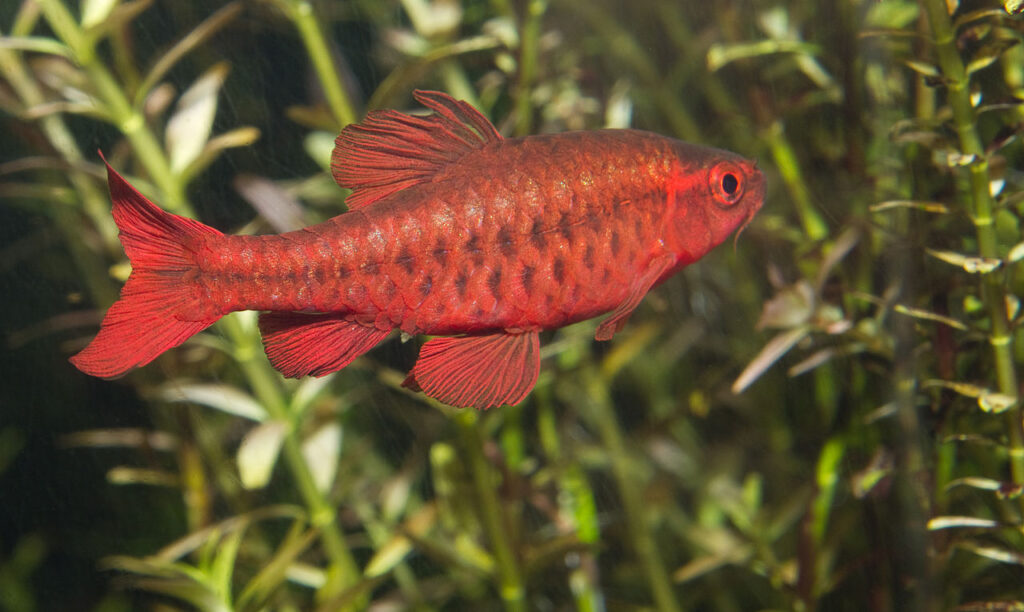
Cherry Barbs are compatible with Golden Dwarf Cichlids due to their peaceful temperament and similar size. These colorful fish add a splash of vibrant red to the aquarium, creating an attractive contrast. Their active swimming behavior in the middle water column provides visual interest without disturbing the cichlids.
| Common/Market Names | Price Range | Care Level | Behavior | Life Span | Max Size |
|---|---|---|---|---|---|
| Ruby Barb | $3-$6 | Easy | Peaceful | 4-6 years | 2 inches |
Kuhli Loach (Pangio kuhlii)
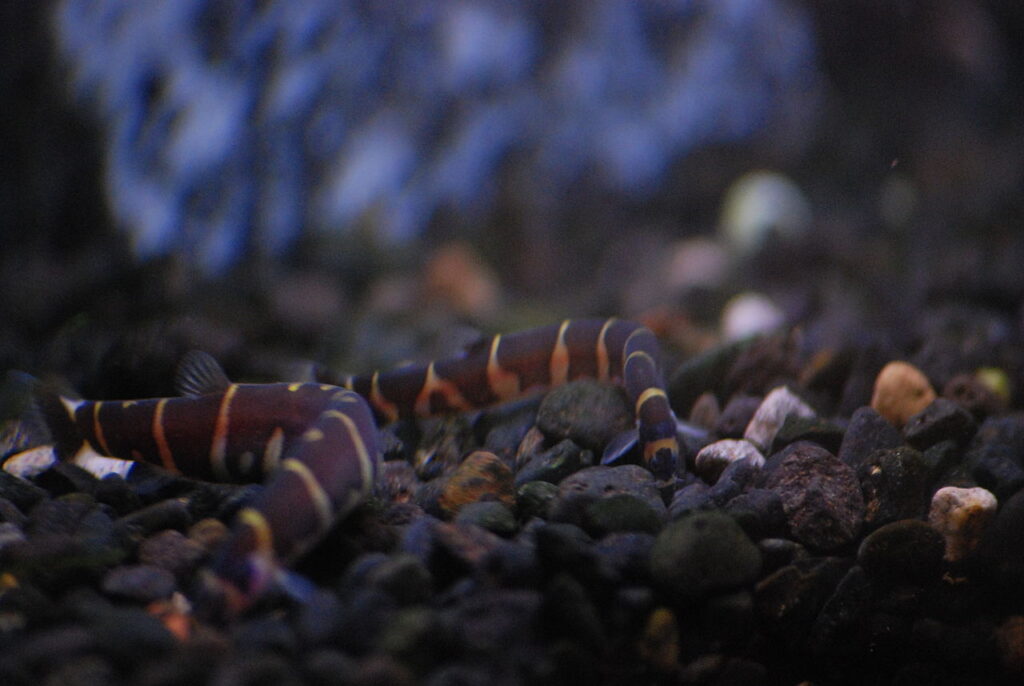
Kuhli Loaches are fascinating bottom-dwellers that make excellent tank mates for Golden Dwarf Cichlids. Their eel-like appearance and nocturnal habits add diversity to the aquarium. These peaceful fish help clean up leftover food particles, contributing to a healthier tank environment.
| Common/Market Names | Price Range | Care Level | Behavior | Life Span | Max Size |
|---|---|---|---|---|---|
| Coolie Loach, Leopard Loach | $3-$7 | Moderate | Peaceful | 10-14 years | 4 inches |
Ember Tetra (Hyphessobrycon amandae)
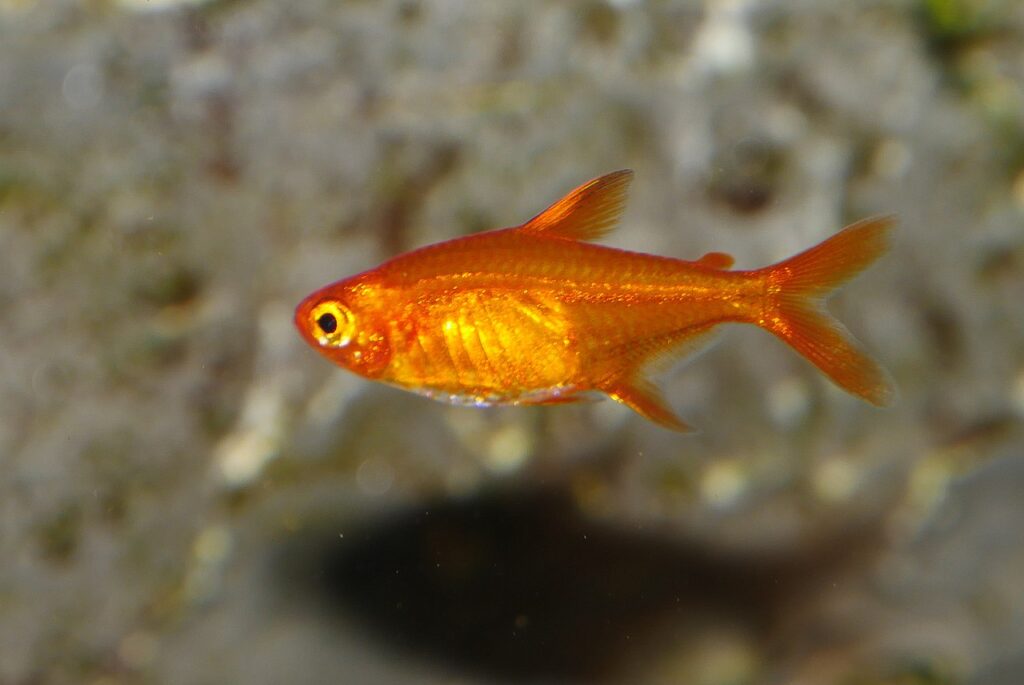
Ember Tetras are tiny, vibrant fish that complement Golden Dwarf Cichlids beautifully. Their small size and peaceful nature make them perfect companions. These tetras add a fiery orange glow to the upper parts of the aquarium, creating a stunning visual effect.
| Common/Market Names | Price Range | Care Level | Behavior | Life Span | Max Size |
|---|---|---|---|---|---|
| Fire Tetra | $2-$4 | Easy | Peaceful | 2-4 years | 0.8 inches |
Bristlenose Pleco (Ancistrus cirrhosus)
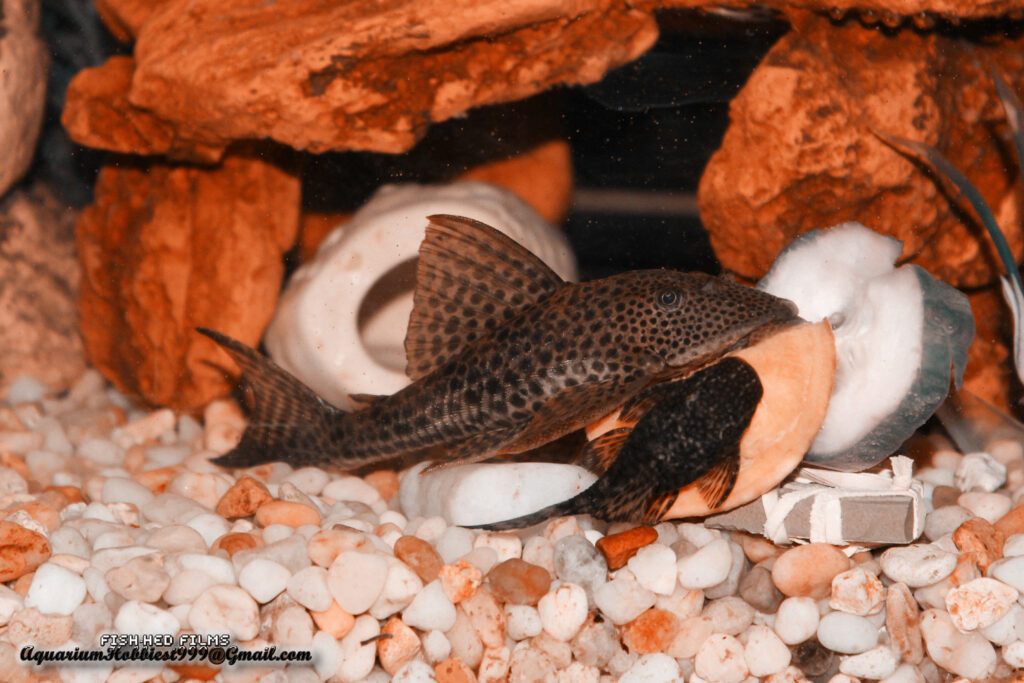
Bristlenose Plecos are excellent algae-eaters that can coexist peacefully with Golden Dwarf Cichlids. Their unique appearance and larger size make them an interesting addition to the tank. These catfish help maintain a clean aquarium by consuming algae and detritus.
| Common/Market Names | Price Range | Care Level | Behavior | Life Span | Max Size |
|---|---|---|---|---|---|
| Bushynose Pleco, Bristlenose Catfish | $5-$10 | Easy | Peaceful | 5-10 years | 5 inches |
Celestial Pearl Danio (Danio margaritatus)
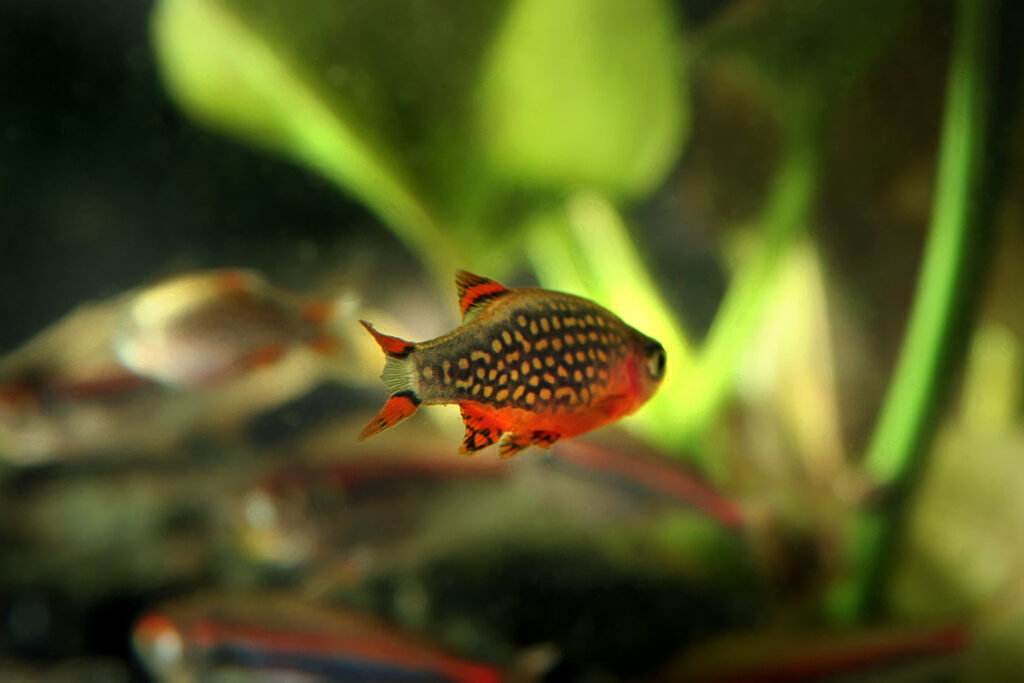
Celestial Pearl Danios are stunning nano fish that make excellent tank mates for Golden Dwarf Cichlids. Their small size and peaceful nature ensure they won’t compete for territory. These fish add a galaxy-like pattern to the aquarium with their starry appearance.
| Common/Market Names | Price Range | Care Level | Behavior | Life Span | Max Size |
|---|---|---|---|---|---|
| Galaxy Rasbora, Microrasbora | $4-$8 | Moderate | Peaceful | 3-5 years | 1 inch |
Dwarf Gourami (Trichogaster lalius)
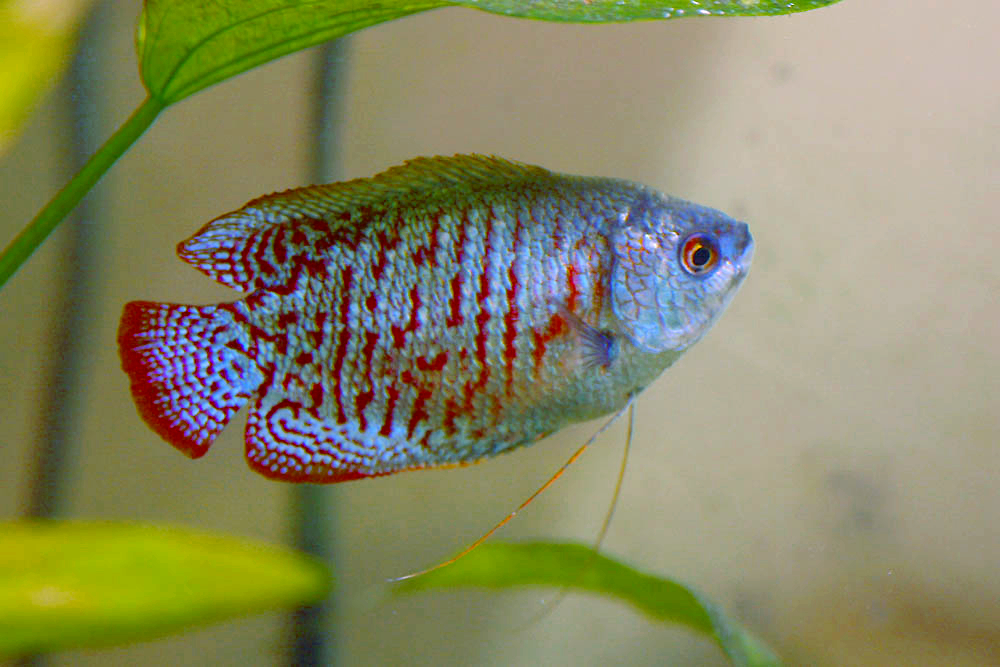
Dwarf Gouramis are colorful and peaceful fish that can coexist with Golden Dwarf Cichlids. Their labyrinth organ allows them to breathe air from the surface, occupying a different niche in the aquarium. These gouramis add a splash of vibrant colors and interesting behavior to the tank.
| Common/Market Names | Price Range | Care Level | Behavior | Life Span | Max Size |
|---|---|---|---|---|---|
| Flame Gourami, Powder Blue Gourami | $4-$8 | Easy | Peaceful | 4-6 years | 3.5 inches |
FAQs about Golden Dwarf Cichlid
How often should I feed my Golden Dwarf Cichlid?
Feed your Golden Dwarf Cichlid small portions 2-3 times a day. Offer only as much food as they can consume within 2-3 minutes to prevent overfeeding and maintain good water quality.
Can Golden Dwarf Cichlids live in a planted aquarium?
Yes, they thrive in planted tanks. Live plants provide hiding spots, mimic their natural habitat, and help maintain water quality. Choose hardy plants like Java fern, Anubias, or Amazon sword.
Do Golden Dwarf Cichlids need special lighting?
They don’t require special lighting, but moderate lighting benefits them and any live plants in the aquarium. A standard LED aquarium light with a day/night cycle is sufficient.
How can I tell if my Golden Dwarf Cichlids are ready to breed?
Look for increased coloration in males, territorial behavior, and the female’s belly becoming noticeably rounder. They may also start cleaning a flat surface in preparation for laying eggs.
Are Golden Dwarf Cichlids suitable for a nano aquarium?
While they’re small, they’re active and territorial during breeding. A minimum 20-gallon tank is recommended for a pair to ensure they have enough space and to maintain stable water parameters.
How do I acclimate Golden Dwarf Cichlids to a new tank?
Use the drip acclimation method over 30-60 minutes to slowly adjust them to the new water parameters. This reduces stress and increases their chances of thriving in their new home.
Can Golden Dwarf Cichlids change gender?
No, Golden Dwarf Cichlids cannot change gender. They are born either male or female and remain that way throughout their lives.
Do Golden Dwarf Cichlids need a specific water flow in the aquarium?
They prefer gentle to moderate water flow, similar to their natural habitat of slow-moving rivers and creeks. Avoid strong currents that might stress them.
How can I encourage natural behaviors in my Golden Dwarf Cichlids?
Provide a variety of hiding spots, open swimming areas, and different textures like smooth rocks and driftwood. This stimulates their natural exploring and foraging behaviors.
Are Golden Dwarf Cichlids sensitive to water changes?
They can be sensitive to sudden changes in water chemistry. Perform regular, small water changes (10-20% weekly) rather than infrequent large ones to maintain stable conditions.



